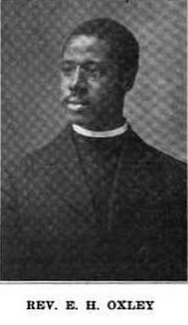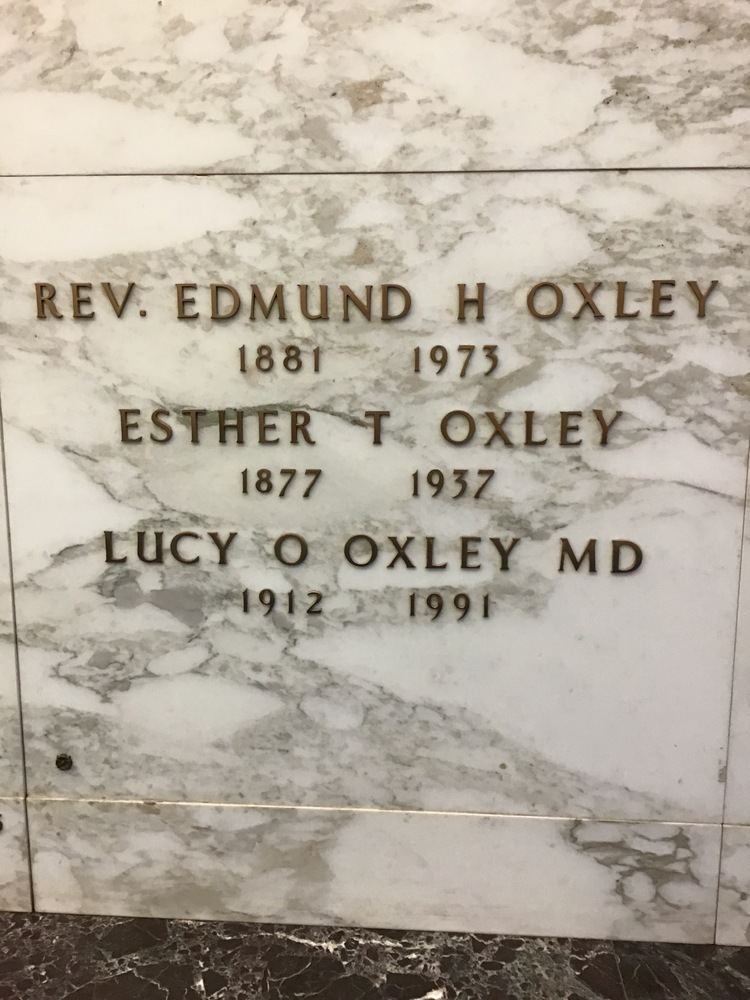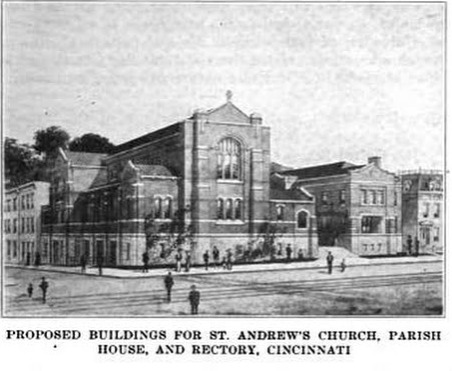Rev. Dr. Edmund Harrison Oxley
Religious and Community Leader
Edmund Harrison Oxley was born in 1881 in Port of Spain, Trinidad and Tobago. He studied at Queen’s College and received degrees from Howard University, where he was the winner of the Hebrew Prize and the Alpha Phi Alpha Prize in Debate and Oratory. He was ordained a priest in 1907. In 1909, he became the first Black student to graduate from the Divinity School at Harvard University, where he was also honored with the Billings Prize in Elocution and Pulpit Delivery.
The Oxley family was exceptionally accomplished. Edmund’s sister Theodora Oxley became the first African American teacher and principal at the Eckstein School in Glendale, a public school for Black children that opened in 1915.
Edmund’s brother George Leonard completed two years of study at the University of Cincinnati and, in the fall of 1921, with his brother’s help became the first Black student to enroll in UC’s College of Medicine. He left the program due to issues having to do with his race and went on to receive his medical degree from Meharry Medical College in Nashville. His experience inspired his niece, Edmund’s daughter Lucy, to become a doctor. Apparently aided by her father’s influence, she enrolled at the UC College of Medicine, and became the first Black student to graduate from the school.
Lucy’s uncle James Oxley received his medical degree from the University of Edinburgh. Ralph Young, another uncle, was a graduate of Howard Medical College in Washington, DC, and the first African American staff physician at Johns Hopkins Hospital in Baltimore.
Edmund Oxley was named rector of St. Andrew’s Episcopal Church in 1915 and moved his family to Cincinnati from Harrisburg, PA.
St. Andrew’s Mission had been founded after conversations in 1894 among a small group of members of St. Paul’s Cathedral. Its first permanent home was located on the northeast corner of West 8th and Mound Sts. in the West End. In 1915, under Oxley’s leadership, the cornerstone was laid for a new Gothic Revival structure that would accommodate 550 people.
During the summer of 1916, Edmund, his wife Esther, their two children, and his siblings Leonard and Theodora all lived at the Eckstein School in exchange for taking care of the building and grounds.
In 1922, while pursuing graduate studies in Philosophy at the University of Cincinnati, Edmund received an honorary Doctor of Divinity degree from his undergraduate alma mater Howard University. At this time, the family was living at 728 West 7th St.
During the 1920s, Ohio churches tended to be very racially segregated, and “most black church people and pastors were affiliated with separate African American denominations, mainly the National Baptist Convention and African Methodist Episcopal church,” according to William W. Griffin in his book African Americans and the Color Line in Ohio, 1915-1930. Oxley was an outlier as leader of a Black parish while also a member of the Cincinnati Clericus, an organization of white Episcopal ministers of which he was at one time a president as well.
At the church, Oxley founded the first Negro Boy Scout and Girl Scout troops in the area. He also served on the advisory committee of the Salvation Army’s Evangeline Home for unwed African American mothers. This home, which later merged with Catherine Booth Hospital, was the first medical organization to offer facilities to Black doctors.
He was also one of the most prominent members of the Cosmic Club, an interfaith group that met at the Wise Center, and was at one point elected president of that club. In Saving Faith: Making Religious Pluralism an American Value at the Dawn of the Secular Age, author David Mislin explains that “The Cosmic Club, as it became known, boasted twenty-five members, approximately half of whom were ‘ministers of all denominations, Catholic, Jewish, and the various Protestant sects.’ The rest were ‘men from the other learned professions.’”
Edmund’s first wife, Esther Winifred Turner Oxley, was also highly educated, having studied at Howard University, Cornell University and Ypsilanti College. She was an educator active in social work. The church was central to the family’s life, and Esther and Edmund established a nursery school and job placement program operating out of St. Andrew’s. At the time of her death in 1937, the family resided at 543 West 9th St.
After Esther’s passing, Edmund married Lucy Mitchell Oxley, a longtime teacher at the Harriet Beecher Stowe School and Porter Junior High School.
Oxley remained at St. Andrew’s until his retirement in 1956, which was a time of transition for his church and for the West End, with urban renewal destroying swaths of the neighborhood, including sites associated with the Oxley family. With Diocesan guidance, the parish purchased its current building at 1809 Rutland Ave. from the Evanston Baptist Church. It relocated in 1960.
He retained the title “pastor emeritus” until his death in 1973.
Rev. Dr. Oxley’s obituary in the Cincinnati Enquirer details even more community involvement, including membership in “the Ministerial Association of Cincinnati. He was a former member of the Urban League of Cincinnati, the National Church Commission, the Executive Commission of the Council of Churches, the Greater Cincinnati Hospital Association and the Committee on Education of the Negro, Division of Social Agencies.”
Along with his his first wife and daughter, he is buried at Spring Grove Cemetery.


